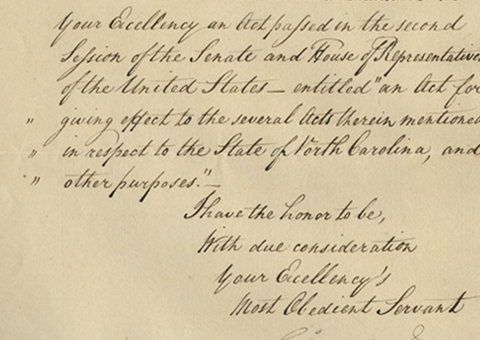Harvard 1660: Girls in the Dorms, “Lascivious” Conduct, Students Drinking and Carousing



The Puritan elders were not amused, and those involved needed to confess or be punished. This is one of those confessions: “Through the grace of God I hope will work a better change in my heart”.
- Currency:
- USD
- GBP
- JPY
- EUR
- CNY
The earliest document relating to Harvard we have had, and the first we’ve seen on the market about young people partying at the college
The Massachusetts Bay Colony was first settled in 1630, when a flotilla of ships sailed from England in April bearing 700 Puritans under the leadership of Governor John...
The earliest document relating to Harvard we have had, and the first we’ve seen on the market about young people partying at the college
The Massachusetts Bay Colony was first settled in 1630, when a flotilla of ships sailed from England in April bearing 700 Puritans under the leadership of Governor John Winthrop. The colonists began arriving at Salem in June. Thousands more followed from Old England to New. Nathaniel and Anna Bowman were among them, arriving in Watertown with the earliest settlers in 1630. According to Watertown historian, Marilyn Roach, Bowman “received several grants of plow land and meadow in town and farmed here for decades before the couple and their seven children moved in 1651 to the part of Cambridge that later became Lexington.”
Harvard is the oldest institution of higher education in the United States. With some 17,000 Puritans migrating to New England by 1636, it was founded in anticipation of the need for training clergy for the new commonwealth. The new College, an early tract said, was a “first flower in their wilderness,” intended to prevent “an illiterate ministry when our present ministers shall lie in dust.” So Harvard was designed as an institution to promote religion, and in Massachusetts that generally meant the Puritan variety known as the Congregational Church.
But it seems that not all Puritans were as puritanical as one would assume, and that young people of every generation have much in common. There was a muster of the local militia in Cambridge, a periodic event that tended to draw an audience. There was one in the summer of 1660, and quite a number of the youths went looking for a good time. On July 24, 1660, court records show that constables were ordered to summon over a dozen young men and women to appear “to answer for lascivious meeting together at the general training last at Cambridge, both in an ordinary [bar] and at the college [Harvard] among some of ye students.” Two of these were 20-year-old Nathaniel Bowman, Jr. and his 18-year-old sister Johanna.
Following up on this, on September 24, 1660, the constable of Cambridge was “required to warn Nathaniel Bowman & Johannah Bowman to appear before me at my house on the last day of this instant week about nine of the clock in the morning then & there to answer for their being at a lascivious meeting of sundry young men & maids at the general training lately held at Cambridge”.
Middlesex Court Records now housed at the Massachusetts Archives include a collection of statements by witnesses to the “questionable” behavior that ensued after the muster when local youths and Harvard students began to carouse. According to records, witnesses encountered “singing and smoking” at the camp in the field,” wine drinking in a tavern, young women perched on a young man’s lap, and unauthorized girls in Harvard dorm rooms. Breaking parietals with girls in the dorms, 1660 style.
The community elders were outraged; and the transgressors must be brought to confession or punishment. Document Signed, Watertown, Mass, 1660, a confession and plea for pardon from Nathaniel Bowman. The document reads, in part: “The humble acknowledgement of Nathaniel Bowman humbly confesseth in answer to what is charged against him by this Honored Court that he desireth heartily to be sorrowful that he was so far overtaken in being in both such company & whereas so much dishonor came to God; and so much cause of offence to his people and trouble to this Honored Court; with thankfullness to the Honored Deputy for his good advice, which through the grace of God I hope will worke a better change in my heart. So craving humble pardon from the Honored Court, for the offenses done.”

Frame, Display, Preserve
Each frame is custom constructed, using only proper museum archival materials. This includes:The finest frames, tailored to match the document you have chosen. These can period style, antiqued, gilded, wood, etc. Fabric mats, including silk and satin, as well as museum mat board with hand painted bevels. Attachment of the document to the matting to ensure its protection. This "hinging" is done according to archival standards. Protective "glass," or Tru Vue Optium Acrylic glazing, which is shatter resistant, 99% UV protective, and anti-reflective. You benefit from our decades of experience in designing and creating beautiful, compelling, and protective framed historical documents.
Learn more about our Framing Services









































































































